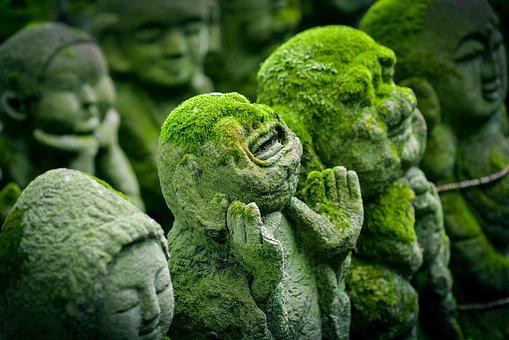Feminist, cult, burning, the road movie by Ridley Scott is also a movie for moviegoers full of references and nods to American cinema. To see again on Arte.
Released in 1991, Ridley Scott’s film is today considered a standard bearer for the cause of women, of which the formidable Thelma and Louise have become the eternal ambassadors. But the cinematographic horizon opened up by this new classic is as vast as the adventure of the two women: from driving a Ford convertible to reclaiming their freedom, to becoming outlaws in the great outdoors. of America, they cross between road movie, fable, comedy and action. To follow their journey, here are some landmarks that punctuate it, unmissable or unexpected.
The most quoted reference: “Butch Cassidy and the Kid” (1969)
Freely inspired by legendary events, this film by George Roy Hill follows the two famous outlaws still on the run and the friendship that binds them until death. If the violence is present, the tone of the comedy allows the lightness to prevail and the Robert Redford-Paul Newman duo to shine. So many essential points in common with Thelma and Louise and her seductive duo Geena Davis-Susan Sarandon. But the best is for the end: like Ridley Scott’s film, Butch Cassidy and the Kid ends with a still image in full motion. Just before it’s too late, just before the fall, time stands still, keeping the characters in the swing of life.
The most pictorial reference: “La Balade sauvage” (1973)
Another crime duo story based on true events, this time a Bonny and Clyde couple. In this first film directed by the great Terrence Malick, however, the scenario counts less than the way in which the filmmaker inscribes his characters in the wild America of Colorado. A real work of painter, impressive in the compositions as in the choice of colors. Ridley Scott, who has always been very marked by the pictorial tradition, also gives pride of place to landscapes in Thelma and Louise where the outskirts of the Grand Canyon become the symbol of freedom, greater than all that the two heroines have gradually won.
The most feminist reference: “Psychosis” (1960)
In the middle of the desert expanses that cross Thelma and Louise a cop stops their terrifyingly menacing Ford Thunderbird. He wears sunglasses, just like the policeman who checks Marion Crane on the road, in Psychosis. Hitchcock had made this moment very difficult for this woman who ran away after stealing a large sum: facing the representative of the law, Marion Crane is suddenly defenseless, as she will be in the shower, in the motel of Norman Bates… In Thelma and Louise, screenwriter Callie Khouri takes up the same situation to better reverse it: at the mercy of the punitive cop, the women regain control of the situation, with a smile and with a gun. The lawyer and the law of men, they don’t care! Louise even seizes, very symbolically, the sunglasses which gave the policeman his male gauze ruthless. Marion Crane is avenged.
The most radical reference: “Wanda” (1970)
At the time of writing Thelma and Louise, her first screenplay, Callie Khouri had necessarily seen this unique film directed by actress Barbara Loden. Wanda is a mother who finds herself on the roads of Pennsylvania after leaving her husband and children, becomes the partner of a violent bank robber with her, continues her headlong rush, suffers an attempted rape… This drift is told with the sensitivity of a unique poetic work. With the codes of entertainment cinema and in a radically opposite tone, Thelma and Louise nevertheless takes up Barbara Loden’s remarks on the fundamental solitude of women when they abandon the roles of wife and mother, losing at the same time their place in a society where they are nothing more than game in the face of men on the hunt.
The most personal reference: “Top Gun” (1986)
Thelma and Louise remains a special film in the career of Ridley Scott, who never doubted the power of women but always saw them as warriors, like Sigourney Weaver in Alien. While the opportunity was offered to him to show new fighters, engaged in a standoff with the men, he made a surprisingly relaxed portrait of Thelma and Louise. Much more than the war of the sexes, what interests the director is the trip offered by the two women. At the wheel, they tear themselves away, they fly away as if, even before abandoning themselves to the last plane, they belonged to the immense sky of America. This fusion with infinity takes on an almost spiritual dimension in one of the film’s most beautiful scenes: one night, while Thelma is sleeping in the car, Louise watches the light disappearing through the clouds, seeming to be just waiting to join the stars. This attraction for a larger world is celebrated on pop music that is never grandiloquent, and even a little FM tape syrup for the thirst for escape… Ridley Scott thus takes up the style of the first Top Gun, made five years earlier by his brother, Tony Scott. A film that was intended to be a pure trip, guided by the pleasure of leaving the ground of the cows, to take off towards freedom. Of Top Gunvirile hymn at full throttle, Thelma and Louise is the fraternally feminine side.
r Very good
Thelma and Louise
Ridley Scott
Have
r Thelma and LouiseSunday July 31 on Arte, at 8:55 p.m.
“Thelma and Louise”, on Arte: five key references that may have escaped you

